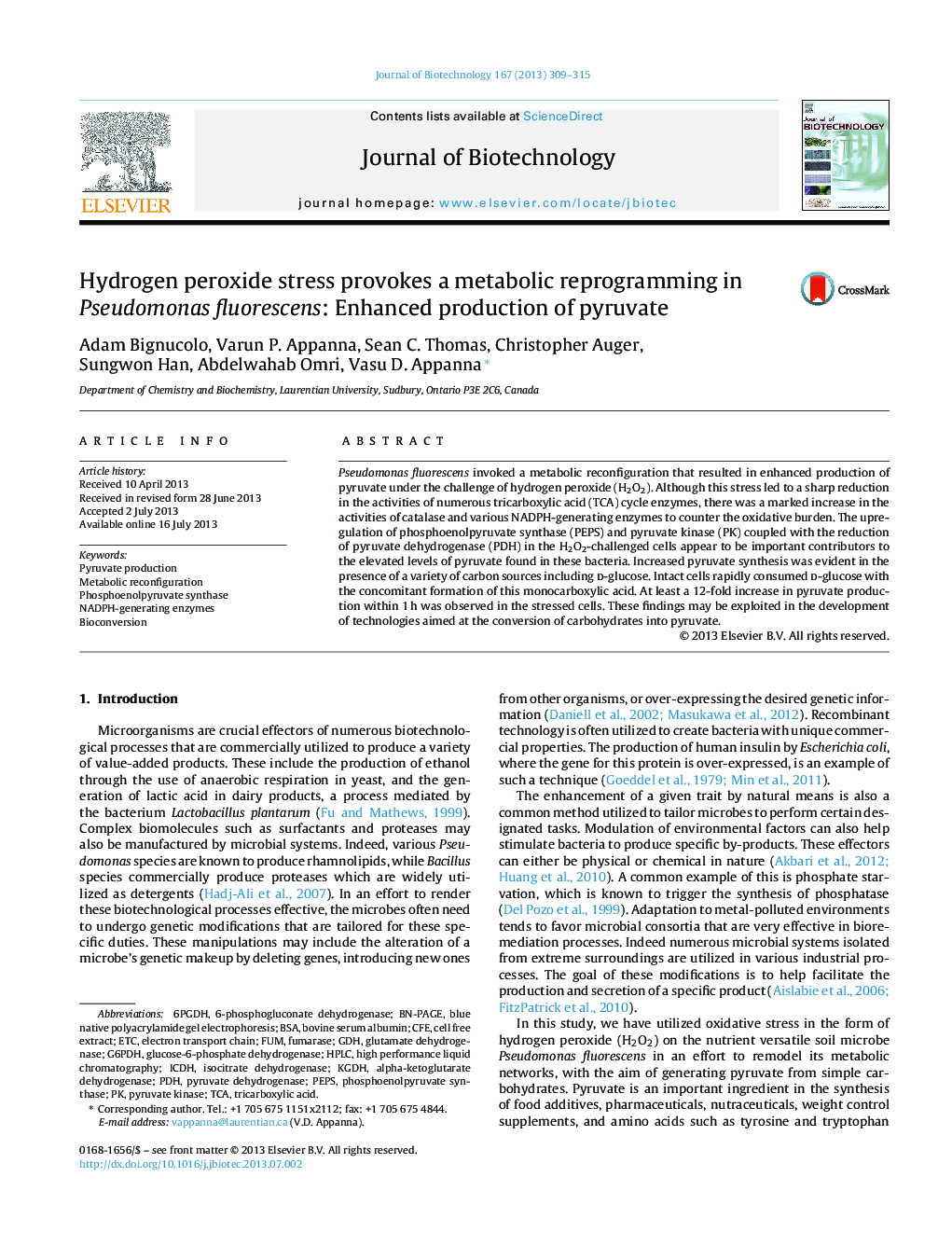| Article ID | Journal | Published Year | Pages | File Type |
|---|---|---|---|---|
| 23500 | Journal of Biotechnology | 2013 | 7 Pages |
•Pseudomonas fluorescens pools pyruvate upon H2O2 stress.•No genetic modification is required to trigger pyruvate formation.•NADPH production is up-regulated, while NADH levels are curtailed.•Metabolomic and proteomic assays are used to ascertain these findings.•A cost effective green alternative to pyruvate-producing technologies.
Pseudomonas fluorescens invoked a metabolic reconfiguration that resulted in enhanced production of pyruvate under the challenge of hydrogen peroxide (H2O2). Although this stress led to a sharp reduction in the activities of numerous tricarboxylic acid (TCA) cycle enzymes, there was a marked increase in the activities of catalase and various NADPH-generating enzymes to counter the oxidative burden. The upregulation of phosphoenolpyruvate synthase (PEPS) and pyruvate kinase (PK) coupled with the reduction of pyruvate dehydrogenase (PDH) in the H2O2-challenged cells appear to be important contributors to the elevated levels of pyruvate found in these bacteria. Increased pyruvate synthesis was evident in the presence of a variety of carbon sources including d-glucose. Intact cells rapidly consumed d-glucose with the concomitant formation of this monocarboxylic acid. At least a 12-fold increase in pyruvate production within 1 h was observed in the stressed cells. These findings may be exploited in the development of technologies aimed at the conversion of carbohydrates into pyruvate.
